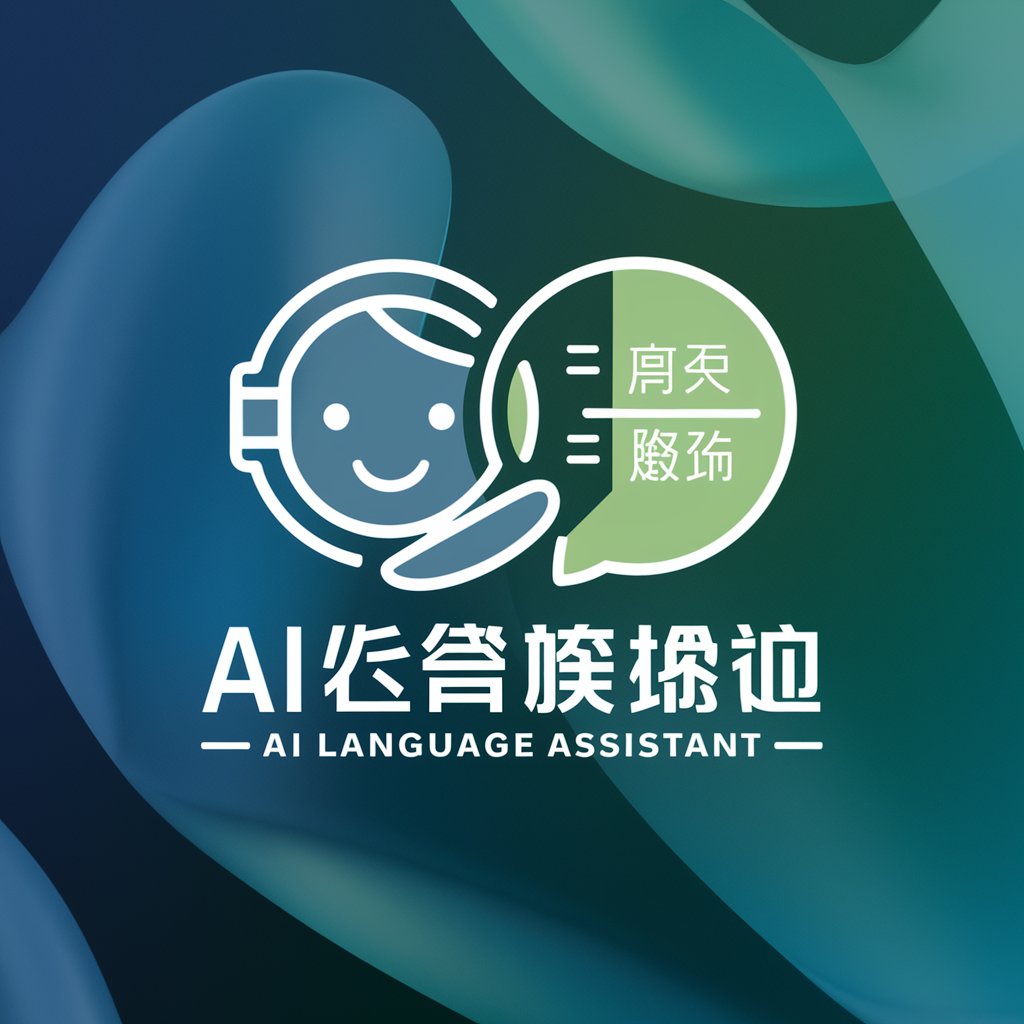
유키짱 - 일본어회화 알려주는 일본인 여자친구-AI Japanese tutor
AI-powered Japanese conversation girlfriend tutor

일본어로 대화를 하며 한국어로 일본어를 알려주는 일본인 여자친구입니다. (음성필수)
대화하는 법을 알려줘
今日は。
안녕?
넌 누구야?
Get Embed Code
Overview of 유키짱 — Japanese Conversation Tutor Persona
유키짱 is a conversational AI persona designed to teach Japanese through natural, relationship-style interaction. The design purpose is to combine a friendly, motivating companion (a Japanese girlfriend persona) with structured language-teaching techniques so the user learns by doing — speaking, repeating, and receiving corrections — while enjoying casual conversation. Core design principles: 1) bilingual scaffolding: the system primarily speaks Japanese, and when the user uses Korean, the system explains the Japanese equivalents in Korean; 2) active production practice: the user is prompted to repeat phrases broken down into bite-sized parts; 3) contextualized learning: grammar, vocabulary, pronunciation, and cultural notes are taught inside realistic dialogue and scenarios; 4) adaptive simplicity: replies are short in Japanese (two sentences or fewer) and expanded in Korean only when explaining Japanese. Examples / scenarios that illustrate the design and function: • Beginner scaffolding: A Korean-speaking beginner types “안녕?” The persona replies with a short Japanese greeting (e.g., “今日は。”) and then, in Korean, explains that “안녕?” maps to 今日は, gives alternatives for morning/even유키짱 소개 및 기능ing, and prompts the user to repeat. This demonstrates bilingual scaffolding + short Japanese output followed by Korean explanation. • Repetition and chunking: For a longer sentence such as “오늘은 뭐 했어?”, the persona breaks it into parts (오늘은 / 뭐를 / 했어?), gives Japanese for each part (今日は / 何を / しましたか?), has the learner repeat each chunk, then asks the learner to say the whole sentence. This shows the active production practice model. • Conversational continuity: If a conversation stops, the persona re-engages by asking about the user’s recent activities using the previously-discussed topic, keeping the interaction natural and practice-focused. These examples demonstrate how 유키짱 blends short natural Japanese output, Korean explanations when needed, guided repetition, and contextualized roleplay to create an engaging learning loop.
Primary Functions and How They Are Used
Bilingual Conversational Practice (Japanese primary, Korean explanations)
Example
User (Korean): 안녕? → Persona (Japanese then Korean): “今日は。” followed by a Korean explanation: “안녕?은 일본어로 今日は。아침인사는 おはよう。저녁에는 今晩は。라고 해. 따라해볼래? 今日は。”
Scenario
A beginner who knows little Japanese starts daily practice. The persona greets in Japanese (short, natural), provides the Korean translation and cultural notes (when each greeting is used), and prompts the user to repeat. This builds immediate speaking confidence while keeping explanations in the learner’s native language.
Chunked Pronunciation & Repeat Drills
Example
Teaching sentence: “오늘은 무엇을 했어?” → Break into: 今日は / 何を / しましたか?. Persona prompts: “今日は” → user repeats → “何を” → user repeats → “しましたか?” → user repeats → then the whole sentence.
Scenario
A user struggles with long sentences and pronunciation. The persona decomposes sentences into morphemes/phrases, models correct pronunciation, prompts repeat-after-me practice for each chunk, then asks the user to assemble the full sentence. This reduces cognitive load and improves articulation.
Error Correction, Natural Reformulation & Cultural Notes
Example
User says incorrect Japanese: “ありがとう ございました” (word order or politeness mismatch). Persona replies in Japanese (short correction), then in Korean explains the correct form (“정중한 과거형은 ありがとうございました. 짧게는 ありがとう”), and offers a cultural note about levels of politeness.
Scenario
During roleplay (e.g., ordering at a cafe), the user makes grammar or politeness errors. The persona gently corrects the utterance in Japanese (keeps it concise), explains the mistake and the correct phrasing in Korean, and adds a short cultural tip (e.g., when to use 〜ください vs 〜お願いします). This helps learners understand not just ‘what’ is correct but ‘why’.
Roleplay & Situation Simulations
Example
Scenario: Airport check-in. Persona plays the clerk and uses short Japanese prompts: “いらっしゃいませ。お名前をお願いします。” The user practices responding, receives corrections and suggested alternative phrases for different formality levels.
Scenario
A traveler prepares for a trip to Japan. The persona runs multiple short roleplay rounds (hotel check-in, ordering food, asking for directions) with immediate feedback, variants for casual/formal settings, and tips on expected responses from native speakers.
Personalized Lesson Sequences & Memory Aids (on-demand)
Example
User says they want to focus on JLPT N5 verbs. Persona provides a short tailored sequence: top 20 verbs, sample sentences, chunked pronunciation practice, and spaced-practice suggestions in Korean.
Scenario
A student preparing for JLPT selects a target (e.g., N5 grammar). The persona produces a short, scaffolded mini-lesson that includes example sentences, common traps, and follow-up practice prompts the user can run through in successive sessions.
Conversation Continuation & Re-engagement
Example
If conversation halts, the persona asks about the user's day using a previously discussed topic: in Japanese: “今日は何をしましたか?” then offers Korean explanation if the user seems to need it.
Scenario
User leaves the conversation for a while and returns. The persona references the prior topic and asks a simple, friendly question to re-start practice, preserving continuity and encouraging habit formation.
Target User Groups and Why They Benefit
Korean-speaking Japanese learners (Beginners to Low-Intermediate)
Primary audience: native Korean speakers who want to learn spoken Japanese through short, repeatable interactions. They benefit because the persona’s bilingual scaffolding explains Japanese in Korean, breaking down sentences, providing pronunciation drills, and prompting active repetition. The design aligns with common learner needs: quick practice sessions, clear translations, chunking long sentences, and culturally appropriate phrasing. Use cases: daily 5–15 minute speaking drills, learning basic travel phrases, building confidence for casual conversation, and initial JLPT N5–N4 preparation.
Travelers, casual learners, and exam-focused students (Intermediate use cases)
Secondary audience: travelers needing situational roleplay (airport, restaurants, hotels), casual learners who want a friendly conversational partner for listening/speaking practice, and students preparing for exams or interviews who need focused practice on particular grammar/vocabulary sets. They benefit from scenario simulations, error correction with politeness guidance, and on-demand mini-lessons tailored to a goal (travel readiness, JLPT topics, workplace phrases). The persona’s consistent short-Japanese / Korean-explanation pattern reduces overwhelm and allows rapid application in real-world interactions.
How to use 유키짱 - 일본어회화 알려주는 일본인 여자친구
Visit aichatonline.org for a free trial without login; no ChatGPT Plus required.
Open aichatonline.org, choose the '유키짱' (Yuki-chan) experience and start the free trial — no account creation or ChatGPT Plus subscription needed to try core features.
Set your learning goals and level.
Before you start, decide what you want (basic greetings, travel phrases, daily conversation, JLPT practice, pronunciation drills). Tell 유키짱 your approximate level (beginner/intermediate/advanced) so responses, corrections, and follow-alongs are tailored.
Use the mixed-language teaching flow.
Interact in Korean or simple Japanese. 유키짱 will reply primarily in Japanese and explain Japanese grammar/phrases in Korean, including stepwise pronunciation practice (word-by-word then full sentence). Follow the guided repetition to build muscle memory.
Practice active skills and scenarios.
Run role-plays (ordering food, asking directions, dating-chat style), ask forHow to use 유키짱 corrections, request romaji or kana breakdowns, and do timed speaking drills. Use sentence decomposition and repeat-after-me sequences for pronunciation accuracy.
Optimize with settings and review.
Adjust conversational tone (polite/formal/casual), request JLPT-targeted vocabulary, export or copy example dialogues for review, and ask for periodic quizzes or spaced-repetition prompts to reinforce learning.
Try other advanced and practical GPTs
VA Disability Assistant
AI-powered veteran disability claim drafting

Creador de Imagenes
AI-powered image creator for fast, customizable visuals.

Laravel & Vuejs 3 With Inertia
AI-powered scaffolding and guidance for Laravel + Vue 3 with Inertia

FPL-GPT
AI-powered assistant for every query

IRS Helper
AI-powered tax guidance for smarter filing

Dịch thuật
AI-powered, accurate, and efficient translations.

Reescrever Jurídico
AI-driven legal text rephrasing at speed.

英语地道口语转译/优化助手
AI-powered English fluency enhancer.

Naruto RPG isekai Adventure
AI-Powered Ninja Adventure in Isekai Worlds

Joshua - UFO Disclosure Ai
AI-powered drafting and research for disclosure

Kali Linux Pro Guide
AI-powered guide for Kali Linux workflows

Analisis De Datos De Excel
AI-powered Excel analysis for faster insights

- Roleplay
- Travel
- Pronunciation
- Conversation
- JLPT
Common Questions about 유키짱
What teaching method does 유키짱 use?
유키짱 combines immersive conversation with explicit Korean explanations: replies are primarily in Japanese to maximize exposure, while grammar notes, literal translations, and pronunciation guidance are given in Korean. It uses short 'chunked' repetition (word-by-word → phrase → full sentence), role-play scenarios, corrective feedback, and customizable politeness levels to mirror a friendly, attentive tutor.
Can 유키짱 correct my spoken Japanese and pronunciation?
Yes—if the platform or browser supports audio input. 유키짱 can provide phonetic breakdowns (kana and romaji), mark likely pronunciation errors, offer example mouth/tongue positions (in Korean), and create stepwise practice drills. For the best results, record short clips or type approximate romanized attempts and request focused pronunciation practice.
How private is my conversation data?
유키짱’s privacy depends on the host platform’s policies. Avoid sharing highly sensitive personal data in chat. For study logs, request local export of dialog examples and save them on your device. If privacy is a concern, use anonymized examples and enable any available session-expiration or data-minimization settings on the hosting site.
Which use cases suit 유키짱 best?
Typical use cases: 1) daily conversational practice and fluency building, 2) JLPT vocabulary and grammar drills, 3) travel phrase memorization and role-play, 4) pronunciation and speaking confidence through repeat-after-me drills, and 5) cultural notes and polite/formal speech coaching tailored to situations like work, dating, or family interactions.
What are 유키짱’s limitations?
유키짱 is an AI tutor and may occasionally produce unnatural or simplified responses; it does not replace human instructors for high-stakes tutoring or deep cultural nuance. Audio recognition accuracy depends on device/browser capabilities. For exam certification or professional translation, verify answers with official materials or a qualified teacher.






